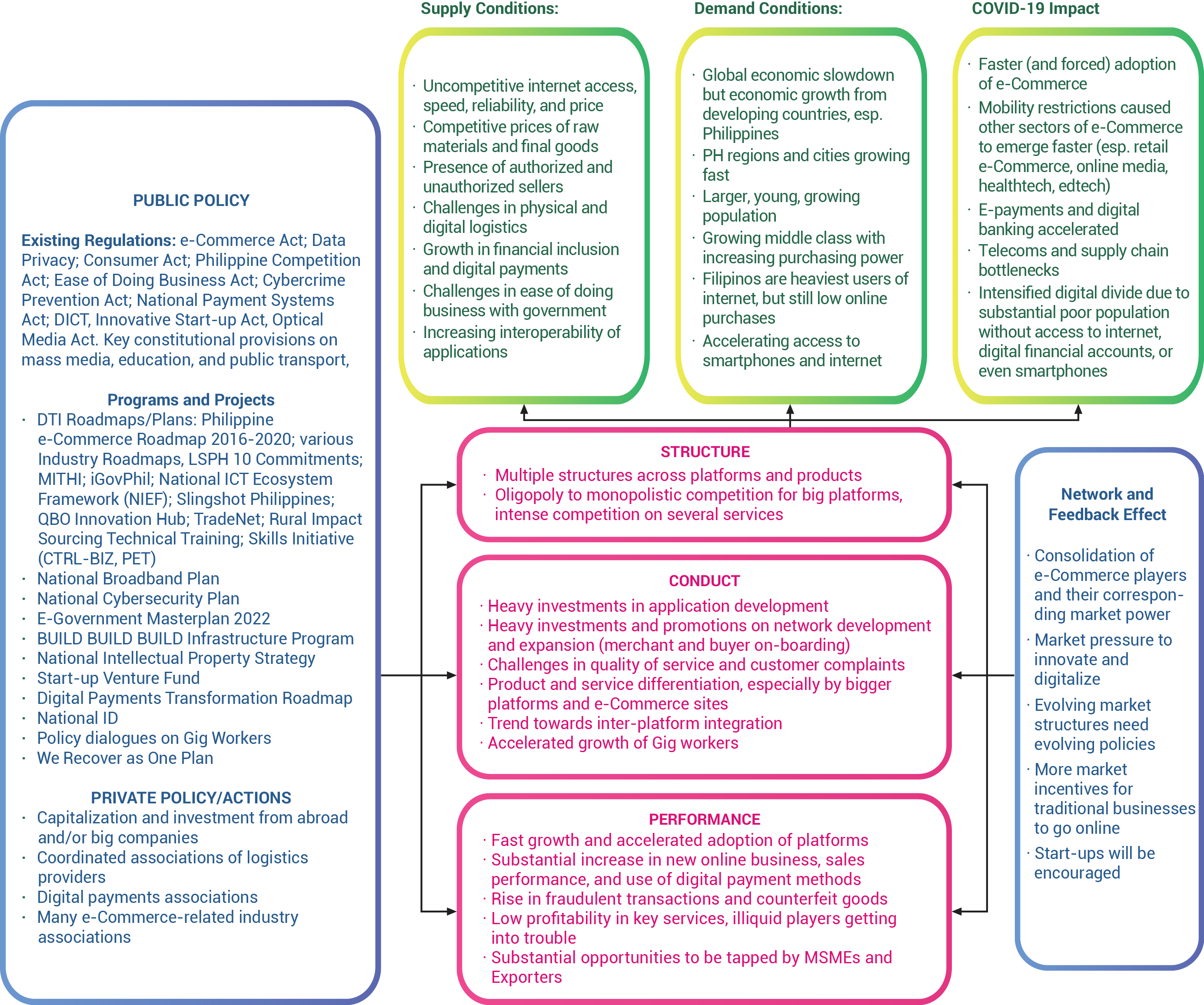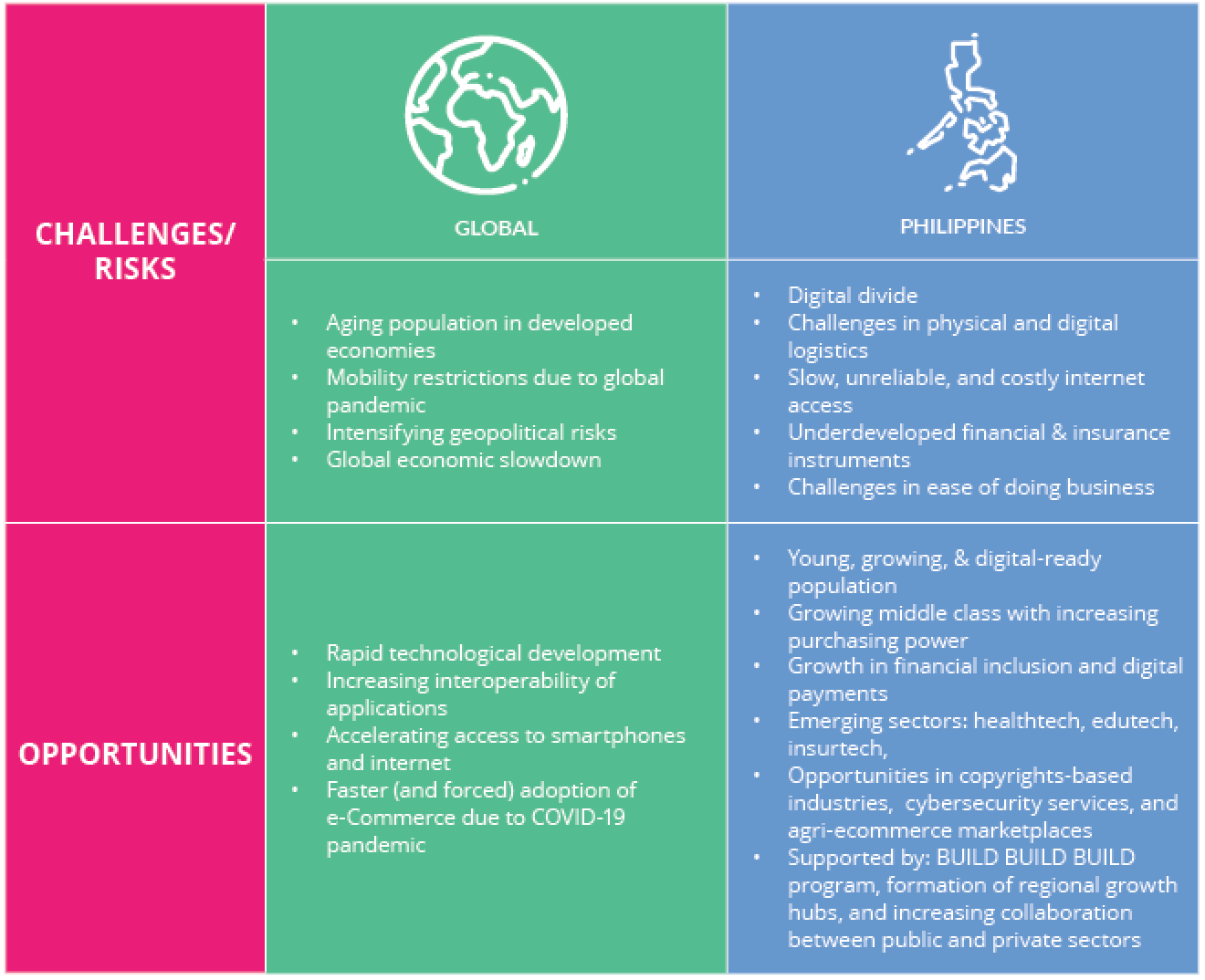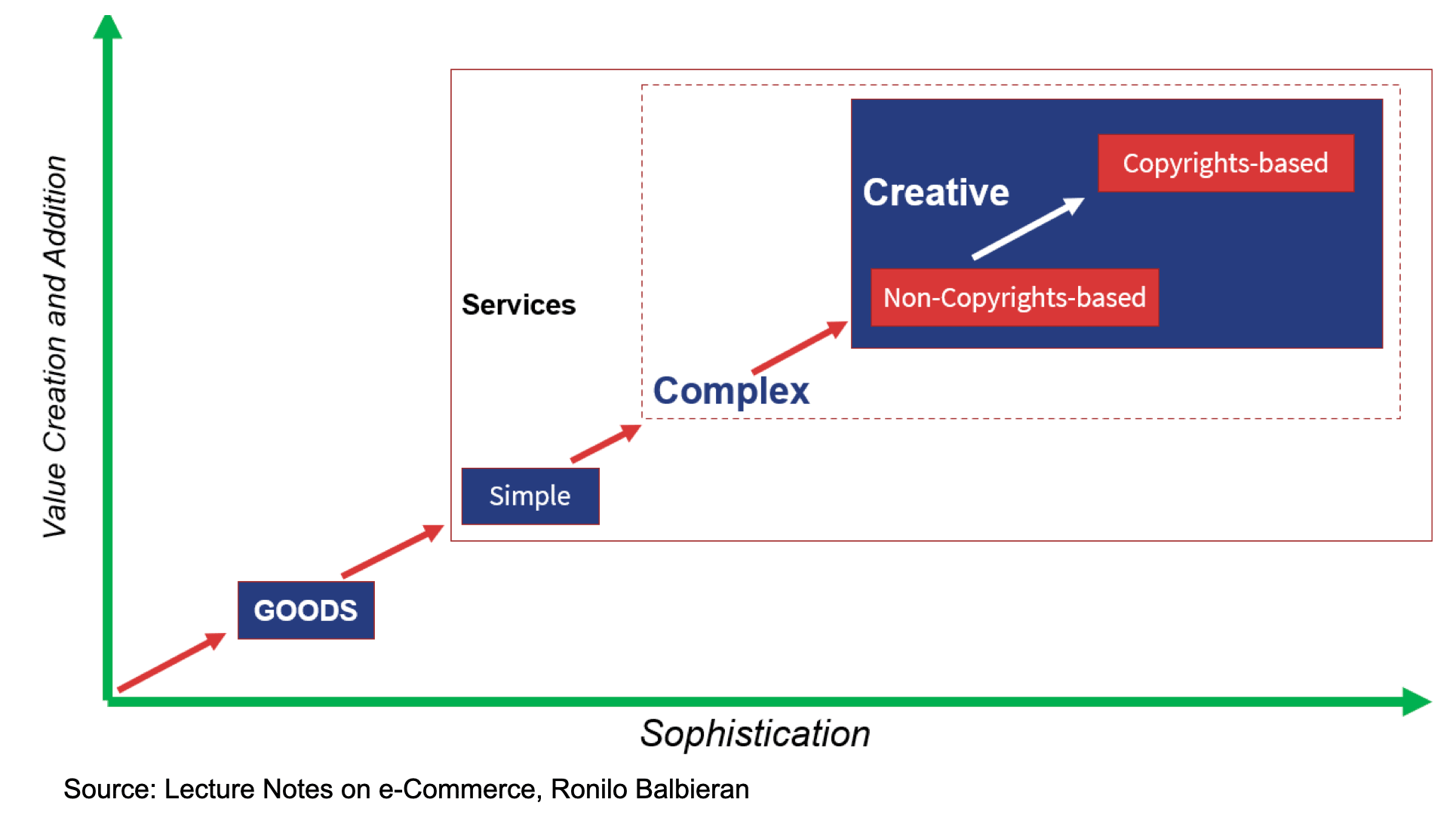Understanding E-commerce in the Philippines
e-Commerce Situationer
Philippine e-Commerce was mainly propelled by a combination of the demands of a young, growing population, exacting easier access to goods and services, along with an abundant supply of innately enterprising Filipinos, aided by relatives earning income from abroad. Beyond this, the country is buoyed by its growing middle class, accelerating access to the internet, mobile phones, and financial technology (fintech) innovations that enhance financial inclusion.
Nevertheless, e-Commerce development has obstacles, such as:
- Slow and unreliable internet connection;
- Low access to more specialized business-to-business (B2B) financial services that can directly lower the cost of borrowing money and make trade more inclusive for MSMEs (ex. access to trade finance and credit insurance);
- High logistics cost as a share of total operating cost due to gaps in transportation infrastructure, warehousing facilities, and systems that can bolster supply chain integration and logistics coordination;
- Complicated and outdated policies and requirements, exacerbated by the overabundance of regulatory agencies overseeing different aspects of online business; and
- Uneven access to markets, information, and connectivity infrastructure, especially for MSMEs and the rural population.
The combination of strong demand conditions, supply limitations, and evolving policies contribute to the dynamic structure of e-Commerce, with near-monopolies in some services, and intense competition in others. For platforms, heavy investment requirements in application and network development (i.e., users and partners) provide hefty entry barriers, reinforcing monopolistic, and oligopolistic market structures. Strong incumbents are balanced by the influx of new startup capital from foreign funders and large companies diversifying their digital portfolios.
While the last few years have brought a marked expansion in e-Commerce, without much cultivation and oversight from regulators, mounting cases of cybercrime and service quality complaints require the advancement of public policies to address the growing needs of the digital economy.
Modified Structure Conduct Performance (S-C-P) Industry Analysis Framework

Note: This analysis was based on studies on e-Commerce in the Philippine setting. For more information, please refer to the PIDS Discussion Paper Series No. 2020-46 Costs and Benefits of a New Discipline on Electronic Commerce (Cuenca, Quimba, & Serafica, 2020).
e-Commerce Situationer and Challenges and Opportunities

Opportunities for Value Creation

Currently, the majority of the platforms, providers, and merchants focus on offering goods and simple services but e-Commerce has substantial potential for value creation that goes beyond the satisfaction of needs towards the fulfillment of wants.
The creative sector and other copyrights-based industries (CBIs) are major contributors in developed digital economies. These developed economies adopt a joint approach in promoting innovation and protecting intellectual property which play vital roles in harnessing the online economy’s boundless opportunities for value creation. According to the World Intellectual Property Organization (2005), “CBIs linked to the digital revolution have grown faster than the traditional sectors of the economy.” And in a PIDS Discussion Paper by Serafica and Albert (2018), it was recommended that the Philippines should focus on the promotion and protection of digital products given the country’s pool of creative talent to enable this emerging sector to contribute to the country’s economic growth.